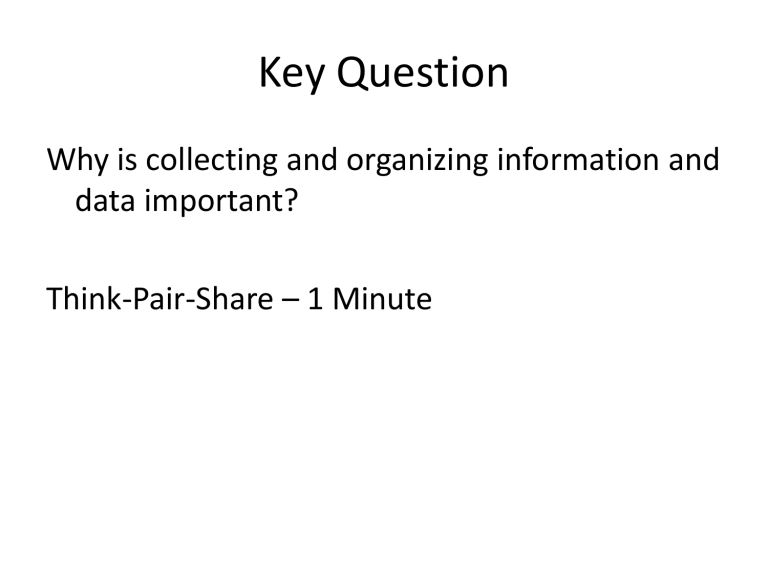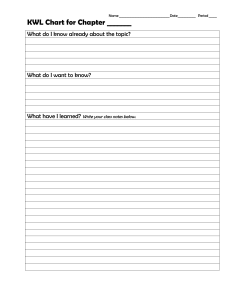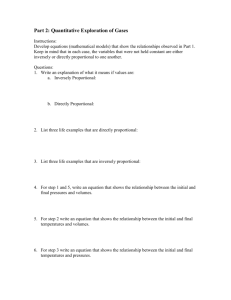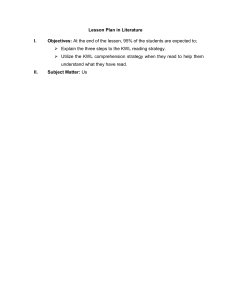
Key Question Why is collecting and organizing information and data important? Think-Pair-Share – 1 Minute Scientific Method Quiz KWL – Experimental Design Brainstorm the first two bullets onto your KWL sheet. Save the last for the end of class. • What do you know? • What do you want to know? • What did you learn? Experimental Design Learning Targets I can… • Identify the three types of variables in an experiment • identify quantitative and qualitative data • decide whether data is directly or inversely proportional. • Determine if an experimental setup would be defined as having “good experimental design.” Variable • 3 types of variables 1. Independent Variable • The factor that is changed is known as the independent variable. 2. Dependent Variable • The factor that is measured or observed is called the dependent variable. 3. The Control Variable • Everything that is kept constant, does not change in an experiment. The Control • The experimenter makes a special effort to keep all variables constant except the one she is changing, so that they will not affect the measurements. • Those factors are called control variables. What is the Purpose of a Control Variable? • Controls are NOT being tested Example of Controls & Variables • For example, suppose you want to figure out the fastest route to walk home from school. • You will try several different routes and time how long it takes you to get home by each one. • Since you are only interested in finding a route that is fastest for you, you will do the walking yourself. What are the Variables in Your Experiment? • Varying the route is the independent variable • The time it takes is the dependent variable • Keeping the same walker throughout makes the walker a control variable. One more thing… it is best to do many trials, changing the independent variable many times. Valid Experiments • Choose only one independent variable to manipulate • Choose only one dependent variable to measure • All others are control variables • Do many trials, changing the independent variable many times • Make sure both variables are quantitative (numbers) Data • Results of the experiment • May be quantitative (numbers) or qualitative • Physics is usually quantitative Data • Must be organized • Can be organized into charts, tables, or graphs Two Types of Data: • Directly Proportional • Inversely Proportional Data • Directly proportional data means increasing the independent variable causes the dependent variable to increase Data • Inversely proportional data means increasing the independent variable causes the dependent variable to decrease KWL – Experimental Design • What do you know? • What do you want to know? • What did you learn?


